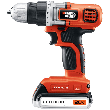Diagnosing Plumbing Pressure Problems
Written by Lee Wyatt (last updated September 5, 2022)
Have you ever stepped into the shower, looking forward a nice relaxing hot shower and turned the water on to only find a trickle of what you should have? Everyone experiences plumbing pressure problems every so often. Instead of sitting there and dealing with the lack of proper water pressure, take some time to diagnose the problem. Diagnosing plumbing pressure problems is remarkably easy.
If you are looking to diagnose plumbing pressure problems simply follow these guidelines, and you will be able to figure out what the main problem is pretty quickly. Best of all, you may even be able to prevent major costly repairs if you do it right away.
- Talk to your neighbors. If you are experiencing a sudden drop in water pressure, be sure that you talk to your neighbors. The reason that you ask your neighbors is that you will want to find out if your home is the only one experiencing the problem. If your home is not the only one that is experiencing the problem, then contact your local utility company—there may be a problem with the water main that they need to fix.
- Check all the faucets. Go through your home and check the water pressure from all of your faucets. If you find that you are only experiencing the loss of water pressure from one of the faucets you will need to check for any obstructions in that faucet. Remove the aerator of the faucet, and turn the water on again to see if there is any difference in water pressure. Take the time to clean the aerator and replace it.
- Clogs or constrictions. Often the cause for loss in water pressure lies in clogged or constricted pipes. If you find that your water pressure doesn't change after you have cleaned the aerator, then you may have a clogged or constricted pipe. The best way to find out for sure is to hire a professional to come over and inspect your pipes.
- Pooling water. Pooling water is often an indicator of a loose or unsealed pipe. Try to trace back any signs of pooling to the pipe that they come from. Once you have traced it back to the proper pipe, check to make sure that it has been sealed properly, and that the pipe is not loose. If you still cannot find any cause or the pooling water, then you may have a leak that is coming in from further underground.
Author Bio
Lee Wyatt
Contributor of numerous Tips.Net articles, Lee Wyatt is quickly becoming a regular "Jack of all trades." He is currently an independent contractor specializing in writing and editing. Contact him today for all of your writing and editing needs! Click here to contact. Learn more about Lee...
Fireplace Safety
Fireplace safety is simply a mixture of common sense and forethought. Here are some simple guidelines to ensure that you ...
Discover More
Garage Storage Systems
One of the most difficult places in the home to keep organized is the garage. This is because the garage is often seen as ...
Discover More
Creating a Perfect Bedroom
Everyone wants to create a perfect bedroom. The bedroom is arguably the single most personal room in the entire home. It ...
Discover More
More Home Improvement Tips
Installing a Pop-Up Drain
If you haven't already got a pop-up drain in your bathroom sink, then you need to think about installing one. Installing ...
Discover More
Installing a Garbage Disposal
Installing a garbage disposal yourself is a task that almost every homeowner, or do it yourselfer can do. Why spend the ...
Discover More
What are Compression Faucets?
Have you ever wondered what compression faucets are? Chances are pretty good that you have wondered that at least once, ...
Discover More

Comments